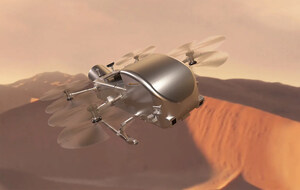HOUSTON, Dec. 2, 2011 /PRNewswire-USNewswire/ -- NASA has signed a patent license agreement that will allow a California company use of NASA-developed technology that could be used to treat hardened arteries in the heart.
(Logo: http://photos.prnewswire.com/prnh/20081007/38461LOGO)
In the 1990s, a group of NASA engineers and scientists at Johnson Space Center were looking into the use of millimeter wave electromagnetic energy in an experimental imaging system. Doing so required the rental of expensive equipment. Although it was determined early on that millimeter wave radiation was not going to be useful for the original imaging application, there was still time left on the rental agreement. Rather than waste it, the engineers and scientists began to brainstorm other uses for it.
After consulting with a local physician, the group came up with a promising application: atherosclerosis treatment. Atherosclerosis occurs when fat and cholesterol build up on the walls of arteries and cause them to harden, making them stiff and blocking blood flow, which can, in turn, cause heart attacks and strokes.
The electromagnetic spectrum that the group had been looking at for imaging purposes –W band, to be specific – could also be used in a miniaturized, directional antenna attached to a catheter. Inserted into a diseased artery, the millimeter wave transmissions could penetrate the artery wall and restore elasticity to the artery without damaging healthy tissue and cells.
"Although it's a little off the beaten path of NASA's mission, we really enjoy seeing some of the technology that we develop find humanitarian applications on the ground," said NASA engineer Dickey Arndt, one of the inventors. "We always try to keep in mind possible terrestrial applications for the technologies we're developing for space exploration."
The technology's potential for use on Earth caught the attention of Dr. Anthony C. Dike, president and CEO of Meridian Health Systems.
"Cardiovascular disease has been the leading cause of death in the United States every year since 1918," Dike said. "My company believes that the need has never been greater for a minimal or non-invasive, low-cost tool such as this for the management of individuals at risk for coronary artery disease."
Meridian will conduct clinical trials with a prototype built by NASA scientists and engineers, working toward Food and Drug Administration approval of its use. The company also worked with Johnson Space Center through a Space Act Agreement to perform experiments using pig arteries, obtained as by-products from a local slaughterhouse, to compare microwave and millimeter wave band operation and to optimize certain design features such as the antenna size, the transmitted power, and the pulse repetition rate.
Current NASA employees involved in the project include Arndt, Patrick Fink, Gregory Lin, Andrew Chu and Phong Ngo. Other inventors involved include former NASA employee Justin Dobbins; former NASA contractors James Carl, George Raffoul and Reginald Beer; Phillip Henry of the Houston Medical Center; and Antonio Pacifico of Baylor College of Medicine.
For more information on how Johnson Space Center technology is being used here on Earth, visit:
http://technology.jsc.nasa.gov
SOURCE NASA
WANT YOUR COMPANY'S NEWS FEATURED ON PRNEWSWIRE.COM?
Newsrooms &
Influencers
Digital Media
Outlets
Journalists
Opted In






Share this article